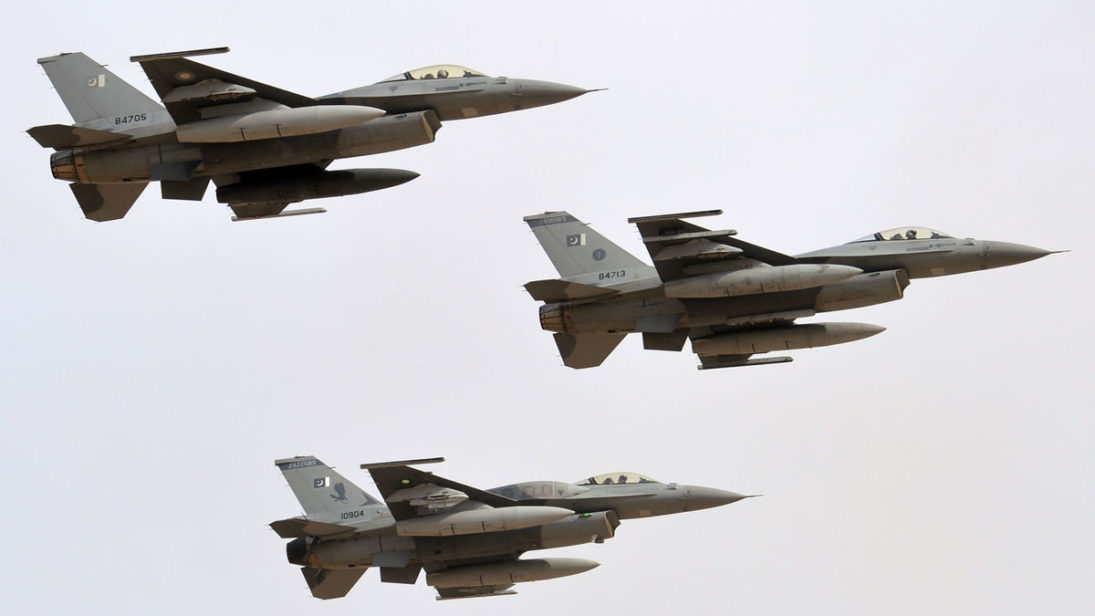
United States-Pakistan Strategic Dialogue
Earlier in this series
US-Pakistan: The Hijab of Expectations
Repeat of the Familiar: US, Pakistan, and F-16s
Palpable Progress, Uncertain Future?
*******
Schadenfreude is the one word that captures what most Indians feel every time Pakistan and America have problems in their convoluted relationship. The second most common feeling is a heady concoction of bewilderment and intense jealousy mixed in varying ratios, depending on the moment. The recently concluded United States-Pakistan Strategic Dialogue, and the chain of events leading up to it regarding the sale of F-16s, was one of those rare occasions when all these feelings coalesced.
Coming from a state with a governance deficit, the author is used to seeing agreements and joint statements often treated as pieces of paper with little chance of application and enforcement. But even by my low expectations, the post-dialogue joint statement suffered from a substance deficit. The initial remarks held little scope for optimism. U.S. Secretary of State John Kerry was blunt about Pakistan’s (and by inference, India’s) nuclear build up—a subject Pakistan’s Advisor on Foreign Affairs to the Prime Minister, Sartaj Aziz addressed with generic language, sidestepping specifics. From an Indian point of view, the very construct that Kerry came up with—a bilateral solution between India and Pakistan (drawing on the United States-Soviet example)—was a crude oversimplification of a complex nuclear triangle that exists in South Asia (between China, India, and Pakistan). Compounding this is the Indian belief, which I subscribe to and is also backed by some in the West, that Pakistan’s build-up has little to do with India and has a complex multi-causality underpinning it. As was expected, Aziz took the parachute offered. Aziz’s opening remarks induced an instant déjà vu. His speech seemed almost verbatim the goal post-shifting, disconnected, defense that then foreign minister Hina Rabbani Khar gave Hillary Clinton in their September 2011 meeting on terrorism, the Taliban, Afghanistan, and India.
When the starting point is a whole load of hot air, you end up with nothing. That indeed was the case. In private, America will continue to harangue Pakistan for complicity in a vast terror network, while Pakistan will continue to deny and avoid public shaming. Obviously then, Indians draw the conclusion that what we’ll get is more of the same—no change.
That these talks got mention in the Indian press was actually remarkable, since the previous iterations have largely been ignored given nothing meaningful came out of them. What made this year stand out was the previously announced sale of eight F-16 fighter jets to Pakistan. That sale did raise eyebrows in New Delhi and brought about the dressing down of the U.S. Ambassador to India. Significantly, private conversations suggest that a renewed push by the planes manufacturer Lockheed Martin to make a more advanced F-16 variant for India may have just faltered spectacularly, after a renewed burst of interest from the Indian Air Force.
India understands exactly how U.S. foreign military sales to two antagonistic rivals works. The United States, for example, sells the same equipment to Egypt, Jordan, and Israel (the F-16) but it always ensures that equipment sold to Israel maintains a vast qualitative advantage. India is the beneficiary of a similar agreement with the Russians. Whatever Russia sells China, it ensures India gets offered a significantly more advanced system. For example, the Russians consider the Su-30’s Indian variant to be more capable than the Chinese variant. Similarly, while offering the late fourth generation Sukhoi Su-35 to China, Russia is co-developing a fifth generation fighter, the PAK-FA, with India. On the same lines, Russia’s sale of diesel electric Kilo class submarines to China is countered by the lease of far more capable nuclear submarines to India. The question then is: why did India feel the need to let its displeasure over the F-16 sale known to the United States?
This mostly comes down to the fact that India doesn’t seem to have the intention of taking the relationship with Washington to the next level, despite America’s best efforts. New Delhi does not really want to balance against China, much preferring that the United States and its regional allies do the heavy lifting, while reaping the benefits of a diverted China. In short, all New Delhi really wants is a free lunch. Typical examples are the nuclear deal, which has now shown no commercial or other benefit for the United States, and demanding that America spearhead India’s NSG, MTCR, and Wassenaar memberships. Similarly, the recent Malabar naval exercises were hardly an example of interoperability. Without CISMOA, the Centrix system, which can handle a wide variety of data sharing responsibilities, was restricted to unsecured voice and text communications only—at the same technological level as a 1990s-era mobile phone.
In that sense, what Pakistan and India want from the United States is pretty much the same—a relationship almost entirely on their terms, where each will pursue their strategic objectives to the fullest. The only difference is that Pakistani and American objectives are divergent for the time being, while Indian and American interests temporarily converge. In effect, both countries want to extract as much as they can from the United States, without investing much into the relationship in return. The only lesson that seems to have come through loud and clear this week is that the Americans are being taken for a jolly good ride in South Asia, and everybody except the Americans is in on the joke.
***
Image: Aamir Qureshi-AFP, Getty